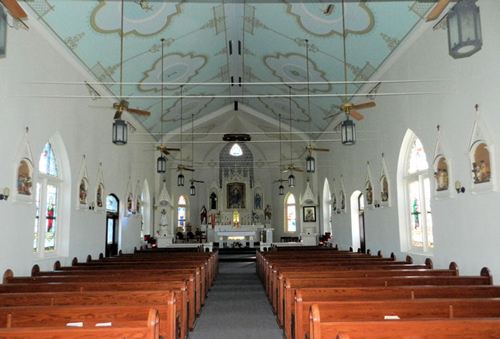Panna Maria, Texas, a Polish Ghost Town. (original) (raw)
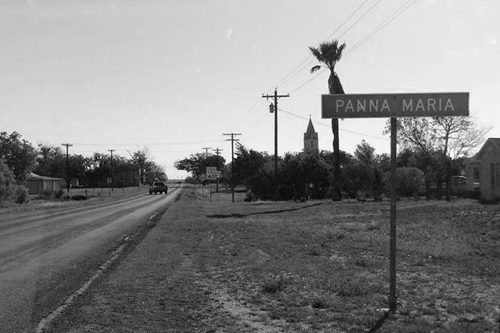
The oldest Polish settlement in the United States.
The Panna Maria Historic District is listed on the National Register of Historic Places.
Historic Marker:
Oldest Permanent Polish Colony in America.
Panna Maria, Texas
Settled by 100 Polish families who came to Texas to gain economic, political and religious freedom. Led by Father Leopold Moczygemba, O.F.M., Conv., they made a contract in 1854 with John Twohig, a San Antonio banker and merchant, for land at this site. The colonists, natives of Upper Silesia and Krakow, landed at Galveston after a hard voyage of nine weeks on a sailing ship. They hired Mexican carts to haul their farm implements, featherbeds, and the cross from their parish church in Poland. The 800 men, women, and children walked - some in boots, others barefoot - the 200 miles inland to their new home. Babies were born on the way, and some of the people died. All suffered from hunger and exposure. On Dec. 24, 1854, they reached this site. They named it Panna Maria (Virgin Mary), placing it under the patronage of the Immaculate Conception. Beneath a large oak they offered their first Midnight Mass of thanksgiving and petition for strength and courage. They camped out until they could put up huts of mud, straw or wood, later building in stone. In spite of hardships, they founded a stable community, aided in settling other frontiers, pioneered in education, and gave Texas many patriotic, dedicated citizens.
(1966)
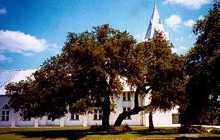 |
The Panna Maria Oak TE Photo, 5-01 |
|---|
History in a Pecan Shell
Panna Maria is polish for Virgin Mary. It is the oldest permanent Polish settlement in the entire U.S.
A Polish missionary Father Leo Moczygemba had been preaching to scattered immigrants around Bandera Texas in the 1840s. After witnessing the successes of his German parishioners, he decided that his fellow Poles would thrive in Texas as well. He wrote back to his father in Silesia.
In 1854, the first group of immigrants arrived - including Father Leo's four brothers. The trip from Poland via Germany took a harrowing three-months.
On Christmas Eve, 1854 the immigrants huddled together from the cold and Mass was held under the Live Oak trees that stand today in the churchyard.
Father Moczygemba bought land from a banker in San Antonio named John Twohig with church money and set aside parcels for the school, church and the immigrants too poor to afford their own farms. Twohig saw them coming and sold them land at inflated prices. Land that was selling in other parts of Karnes County for 1.50 an acre were sold to the Poles for close to 6.00 per acre.
After a severe drought and other setbacks, Father Moczygemba was blamed for bringing the unhappy Poles there and had to leave because of threats to his life. He went to Michigan, another state with recent Polish immigrants. He died there, after years of service to the Polish community. In 1974 citizens brought his remains back to be reentered under the same tree where he once said Mass.
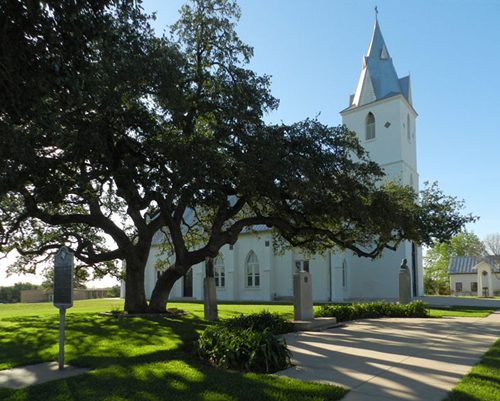
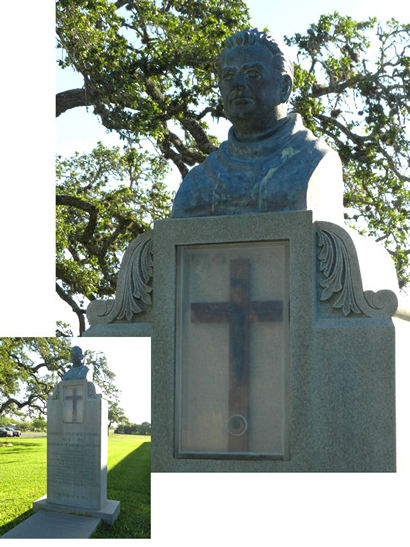
The population dwindled and the town was bypassed by the railroad.
The Community Center still serves the hundreds of former Panna Marians and descendents for various festivals and holidays.
The Catholic school has been turned over to the Karnes County ISD. It appears not to be in use.
L - The children's watering trough
R - BBQ Pit counter-weights
TE Photo, May 2001
Panna Maria, Texas Landmarks
Photo Gallery
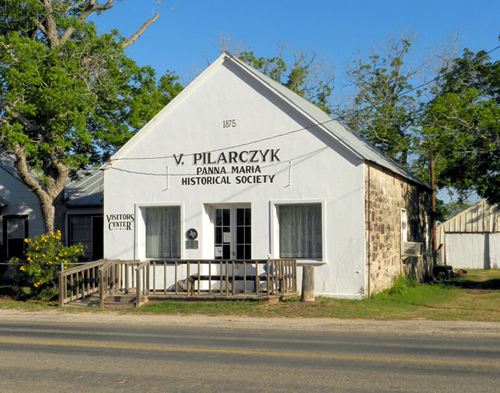
Pilarczyk Store
The Panna Maria Historical Society & Visitor's Center
13780 N. FM 81
Recorded Texas Historic Landmark
Photo courtesy Barclay Gibson, May 2013
Historic Marker
Pilarczyk Store
Built 1875; second oldest store in Panna Maria; still has original rafters and floors. Lime for mortaring stones (visible on back and sides) was fired in home kilns. Store was bought by Victor Pilarczyk, 1913. First gas pump was installed 1919.
Recorded Texas Historic Landmark - 1968
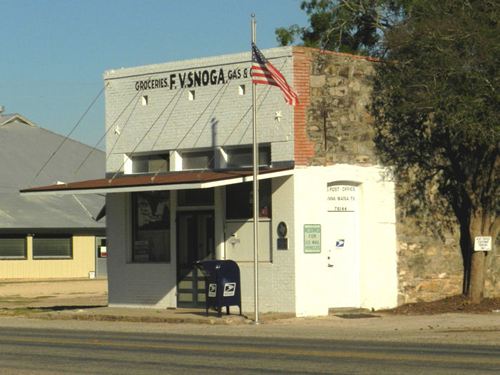
Historic Marker
First Store in Panna Maria
Built in 1855; used as a storeroom for landlord's share of Panna Maria crops. The landlord, John Twohig, a devout Catholic, set aside one room of store for the church and school. Owned and operated by the Snoga family since 1918.
Recorded Texas Historic Landmark - 1966
Incise in base: Marker furnished by Snoga families in memory of Frank and Annie Snoga
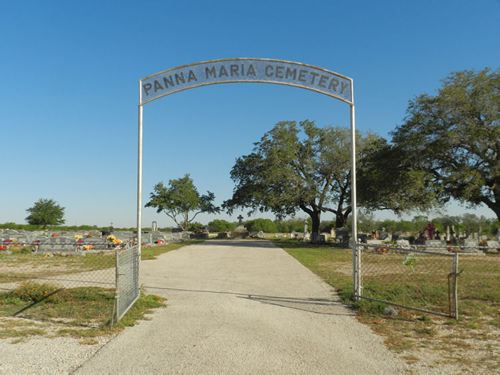
Panna Maria Cemetery
To get to the Panna Maria Cemetery, go just south of the church to the large white community buildings and turn West. The road will lead straight to the cemetery gate after about a quarter mile.
The oldest part of the cemetery is obvious due to the taller and more elaborate tombstones.
The name Moczygemba still is held by several Panna Marians and many stones in the cemetery are marked with the family name. One of Father Leopold's four brothers had ten children.
L - Tombstone with Sculpture
R - At least one grave testifies that Polish immigrants did play a role in the Civil War
TE Photo, May 2001
The community was harassed for its perceived Union sympathies or its failure to support the Confederacy during the Civil War. The community was so isolated that strangers passing by on horseback had no idea who they were or where they were from.
At least one tombstone in the cemetery shows that the Poles did participate to some degree. One young man (Albert Lyssy) served in the Confederacy, was captured, released and then placed in the Union Army where he was wounded and taken prisoner again - this time by the Confederates.
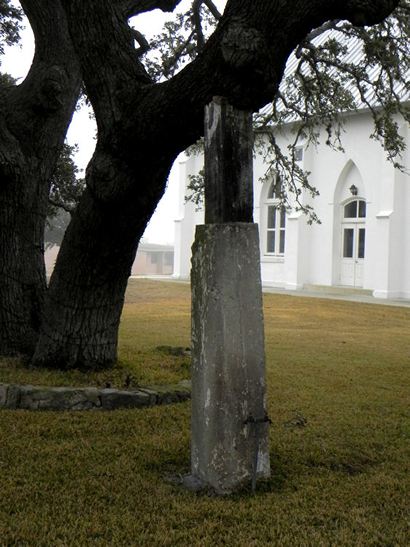
Panna Maria historic oak with support
Photo courtesy Barclay Gibson, Feb. 2011
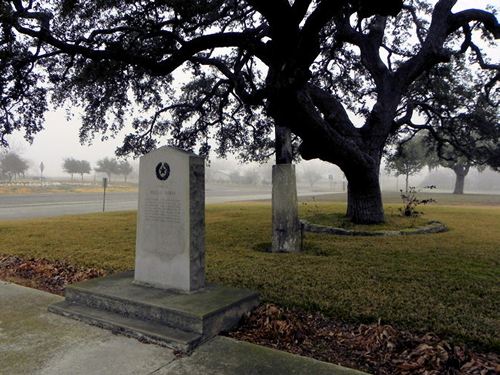
Panna Maria Centennial marker
Photo courtesy Barclay Gibson, Feb. 2011
Historic Marker
Town of Panna Maria
Oldest Polish settlement in Texas -
Established December 24, 1854 by the Reverend Leopold Moczygemba O.F.M., who was instrumental in bringing from Poland about 100 Polish peasant families - Within a few months the majority sought homes in other localities in Texas.
Erected by the State of Texas 1936
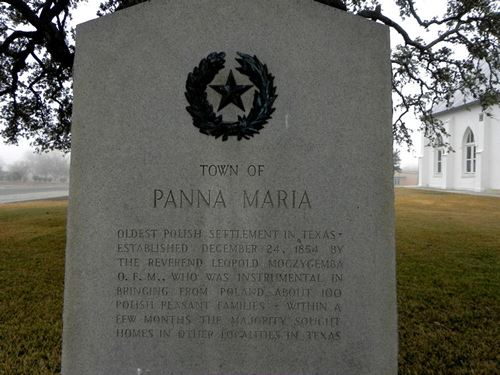
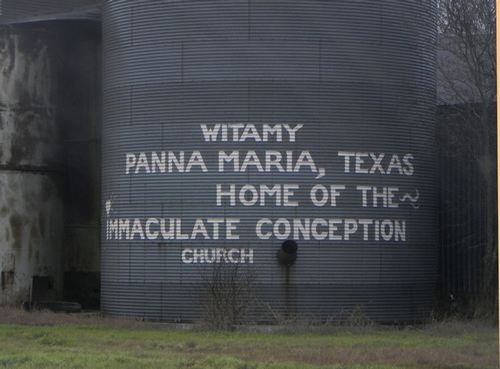
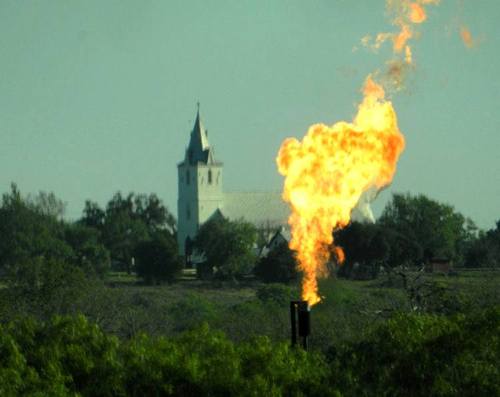
L - This building was the first Polish house in Panna Maria (c. 1858) The steep roof was a Silesian design to prevent the accumulation of snow.
R - A house on main street
TE Photos, May 2001
Panna Maria Chronicles
- A Snakebitten Legacy by Clay Coppedge
Father Leopold Moczygemba, who founded the country�s first Polish community, first Polish Catholic School and who also consecrated the first Polish Catholic Church, was one person who had to pay a price in his own time for an honored place in history..... Read full article
Panna Maria, Texas Forum
- Greetings from South Texas
A bit of information for the small town of McCook. From what I have gathered, McCook was established by some Polish folks that moved down from Panna Maria, Texas. They established a small farming community in south Texas and built a nice church. The folks in McCook are a fine bunch and right neighborly. I grew up in Edinburg, about twenty five miles from McCook. I still remember some the the names of the Polish students that came from McCook. We had the Kotzurs, the Pavelics, the Pilarziks, the Pavlickas, the Sekulas and the Kellers to name a few.... more - Richard Sanchez, August 20, 2006
Nearby Destinations
- Within 5 miles are Helena (another ghost town) to the East, and Cestohowa to the North.
- From San Antonio, take Hwy 181 South to FM 81; or take Hwy 87 South to Hwy 80 South to Helena to FM 81. Approximately 60 miles drive.
Texas Escapes, in its purpose to preserve historic, endangered and vanishing Texas, asks that anyone wishing to share their local history, stories, landmarks and recent or vintage photos, please contact us.

